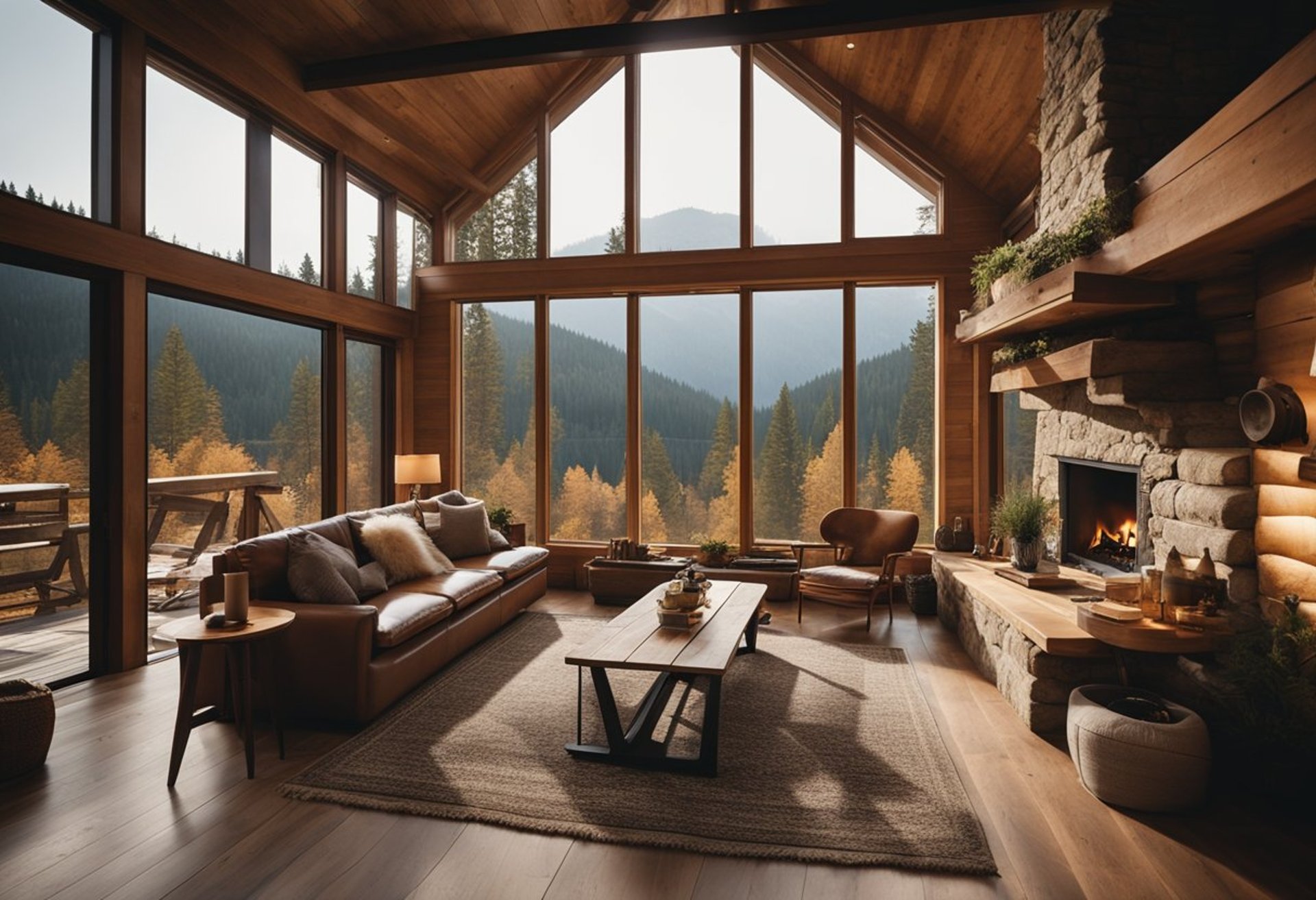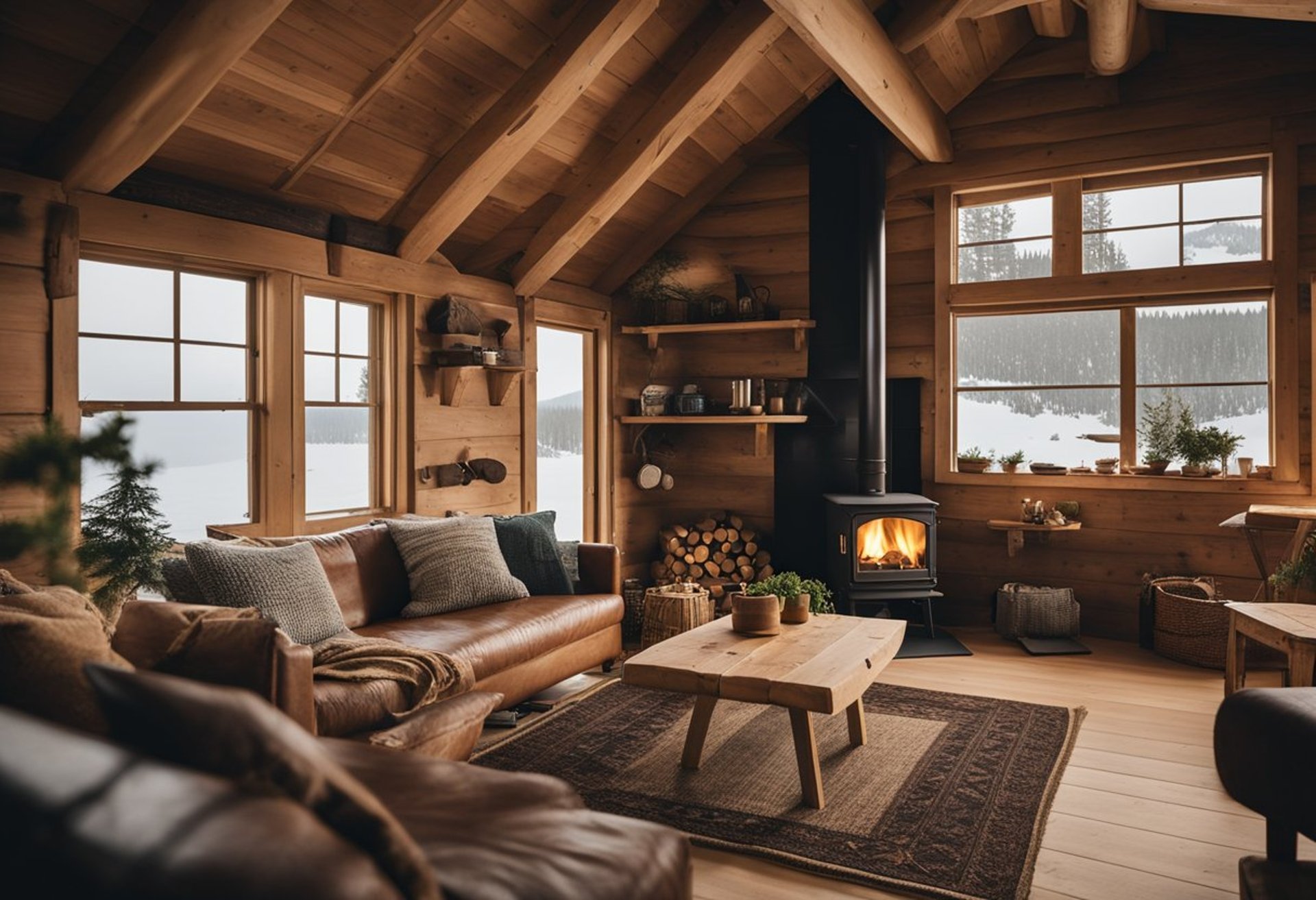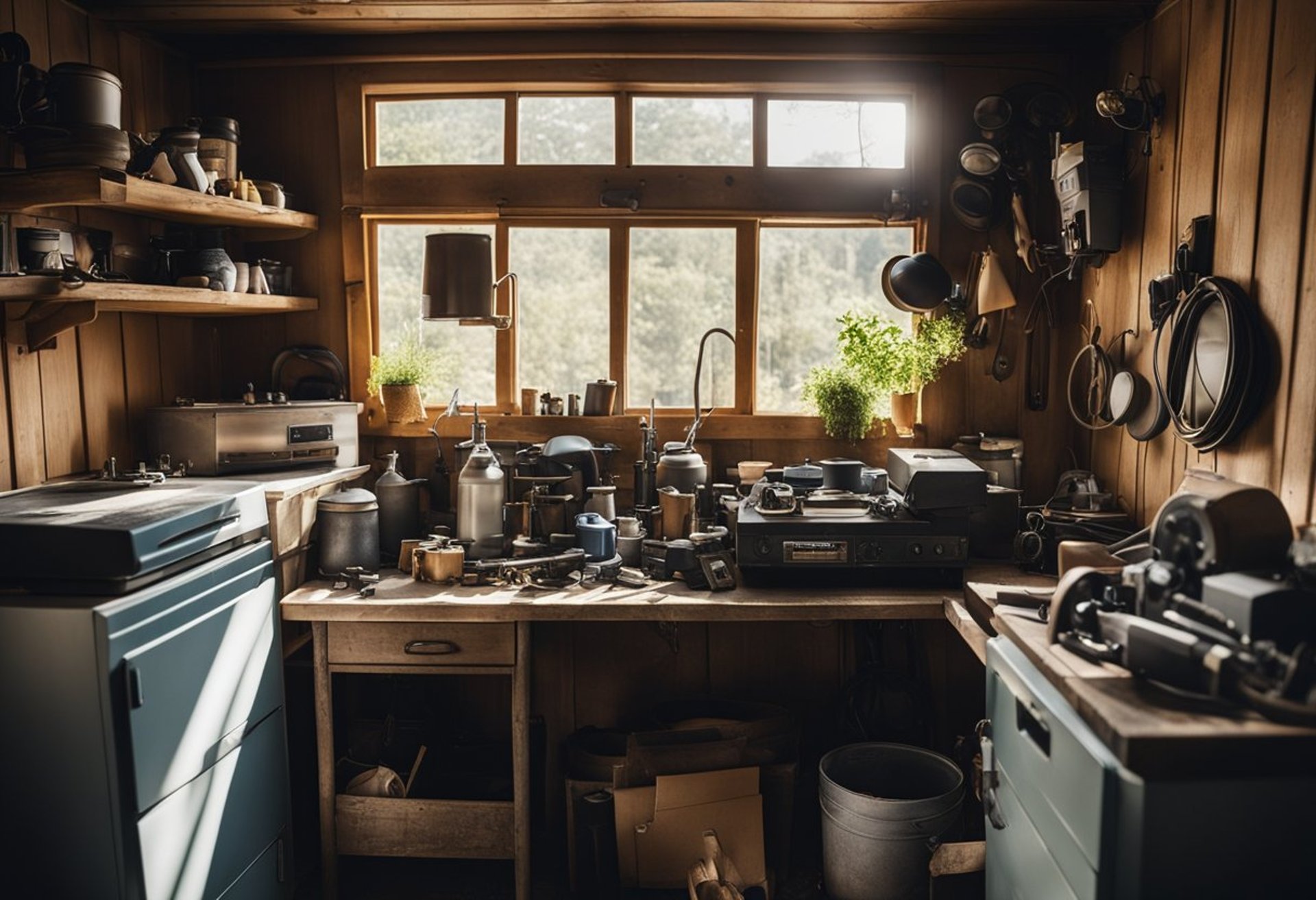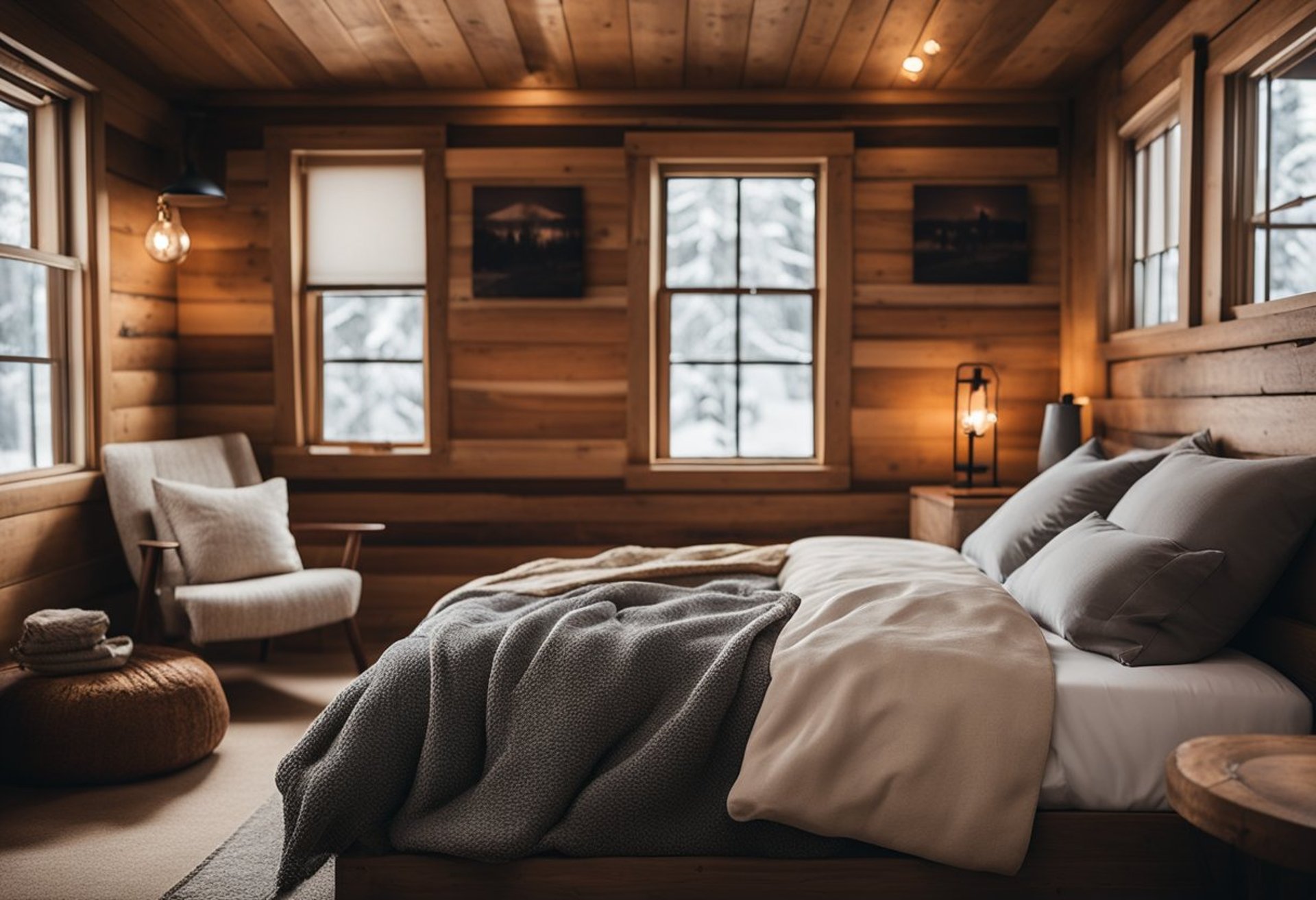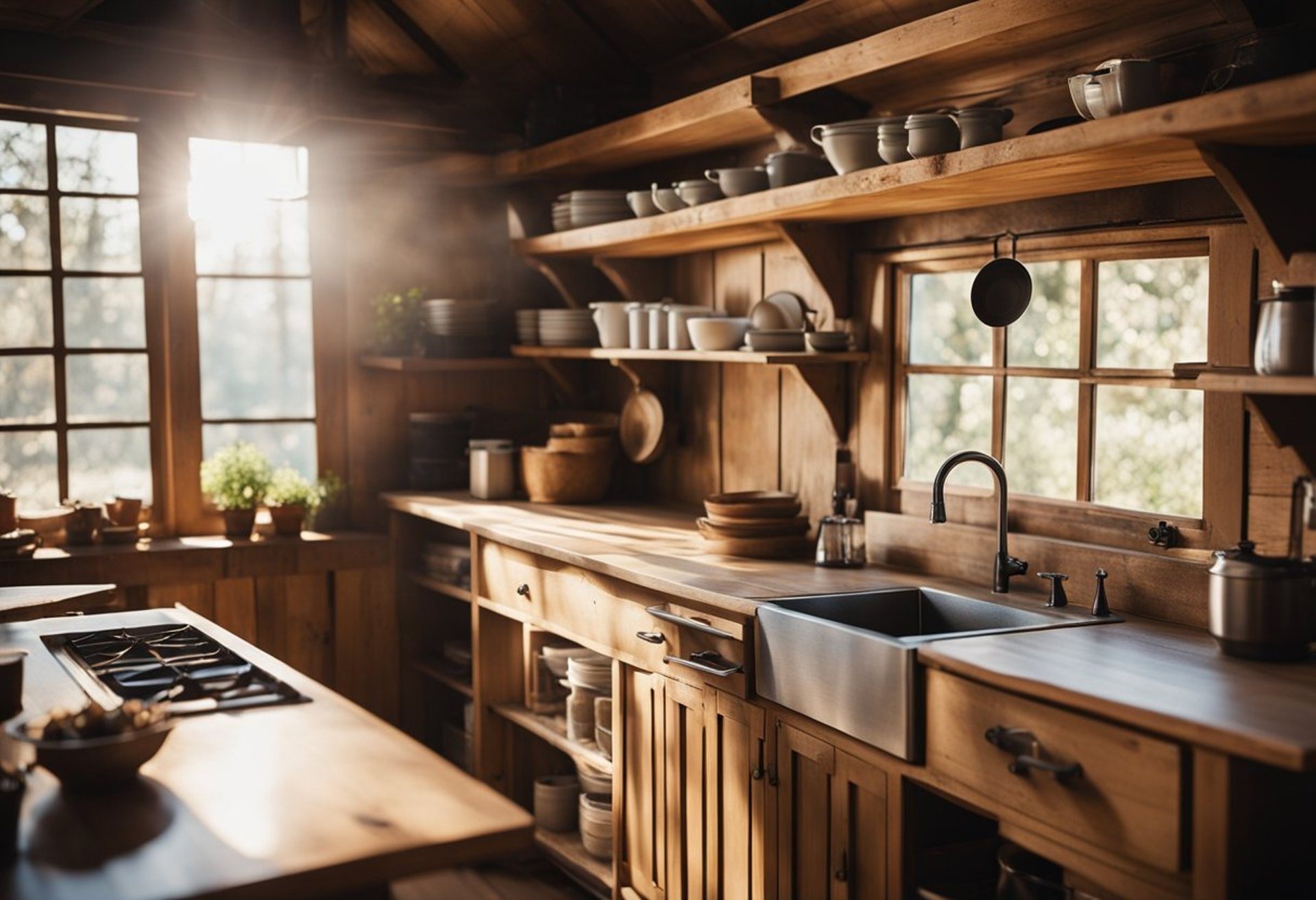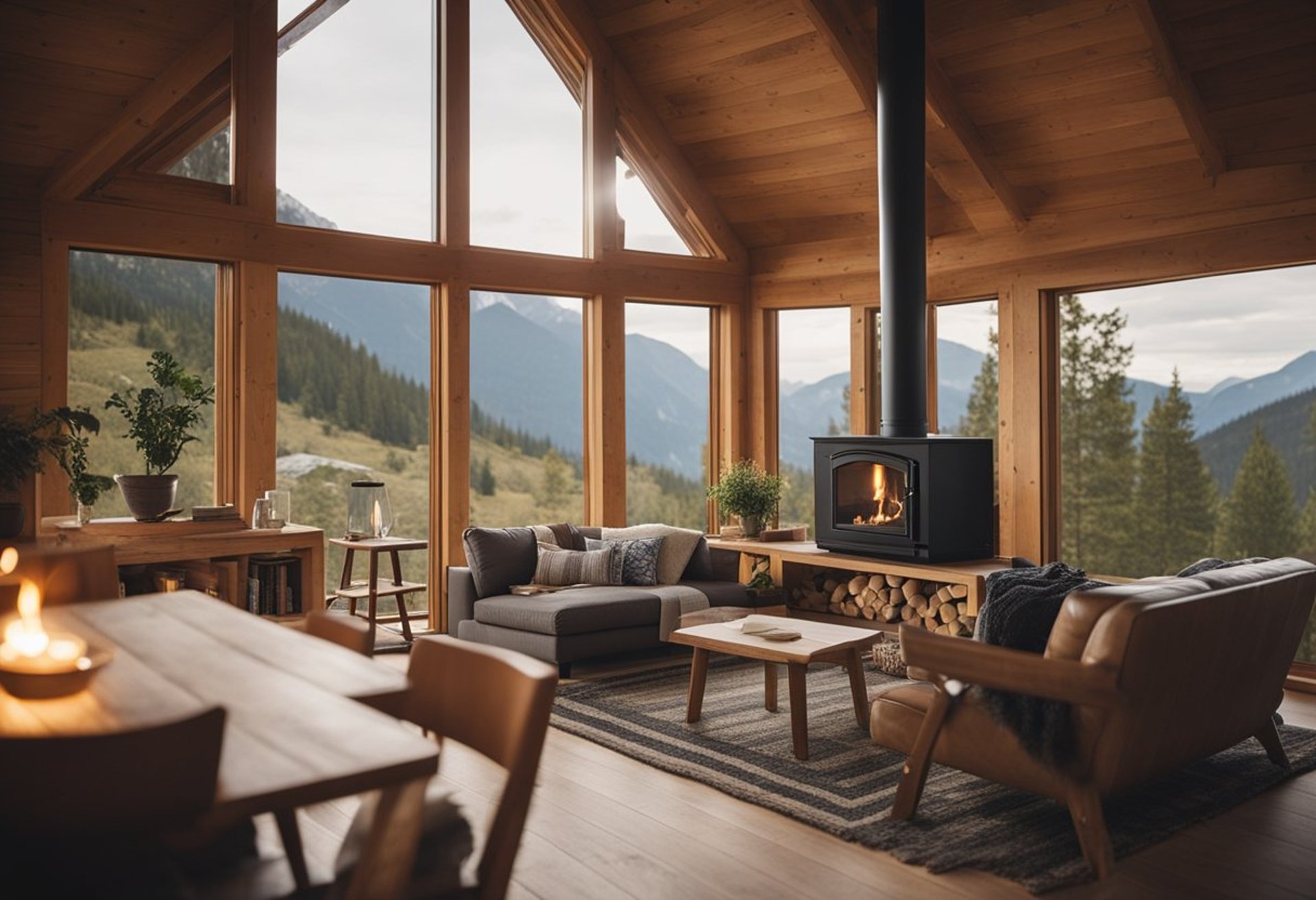Off the Grid Cabin Interior: Designing a Cozy Retreat in Nature
For those seeking a retreat from modern life's chaos, an off-the-grid cabin offers both solitude and serenity. The interior of such a cabin optimizes functionality while embracing rustic charm, creating a perfect environment for relaxation and connection with nature. Thoughtful design choices can transform a simple space into a cozy haven that prioritizes comfort and sustainability.
Off the Grid Cabin Interior: Designing a Cozy Retreat in Nature
For those seeking a retreat from modern life's chaos, an off-the-grid cabin offers both solitude and serenity. The interior of such a cabin optimizes functionality while embracing rustic charm, creating a perfect environment for relaxation and connection with nature. Thoughtful design choices can transform a simple space into a cozy haven that prioritizes comfort and sustainability.
A well-planned interior layout maximizes available space and ensures each area serves a purpose. From open-concept living areas that encourage togetherness to bedrooms designed for restful sleep, every element plays a crucial role in the cabin's overall atmosphere. Efficient kitchen designs and smart bathroom solutions further enhance the living experience in these unique homes.
Creating an off-the-grid cabin isn't just about the structure; it's about crafting a lifestyle centered around simplicity and comfort. With careful attention to detail, these interiors can reflect personal style while meeting practical needs.
Key Takeaways
Functional design maximizes space and comfort in off-the-grid cabins.
A well-equipped kitchen enhances the overall living experience.
Thoughtful finishing touches make an off-the-grid cabin feel like home.
Design Principles for Off-the-Grid Cabins
Creating an off-the-grid cabin requires careful consideration of sustainability and how the structure integrates with its natural surroundings. These principles guide the design process for an efficient, functional, and harmonious living space.
Sustainability and Self-Sufficiency
Sustainability is critical in off-the-grid cabin design. The use of renewable resources plays a vital role, such as incorporating solar panels for energy. Rainwater collection systems can supply water needs, while composting toilets reduce waste impact.
Building materials should be sourced locally and chosen for their environmental footprint. Options like reclaimed wood or naturally sourced stone minimize transportation energy. Insulation is essential to enhance energy efficiency, using materials like sheep's wool or cellulose to maintain comfortable internal temperatures without excessive heating.
Self-sufficiency can also include growing food on-site. Garden design should maximize space and consider permaculture principles. Additionally, installing efficient wood stoves or biomass heating systems ensures warmth during colder months.
Integration With Nature
Integrating the cabin with its surroundings enhances both aesthetics and functionality. Large windows allow natural light in and offer views of the landscape. Positioning the cabin to take advantage of sunlight reduces reliance on artificial lighting.
Outdoor living spaces extend usable areas and foster a connection with nature. Decks and patios can be designed to flow seamlessly from indoor spaces. Natural landscaping should use native plants, which require less water and maintenance.
Architectural styles should reflect local ecosystems, utilizing colors and forms that blend with the environment. Roof designs that mimic local natural features can enhance harmony with the landscape. Creating an off-the-grid cabin that resonates with nature ensures a peaceful and resonant living experience.
Interior Layout and Spatial Organization
The layout of an off-the-grid cabin is essential for maximizing comfort and functionality. Effective spatial organization can enhance the living experience while accommodating necessary amenities in a limited area.
Optimizing Space in Compact Interiors
Compact interiors require strategic planning to make the most of limited square footage. Multi-functional furniture is crucial. For instance, a fold-out table can serve as both a dining area and a workspace.
Built-in Storage: Using vertical space for built-in cabinets or shelves can free up floor space.
Nooks and Alcoves: Cleverly designed nooks can create cozy reading spots or sleeping areas without taking much room.
Open Layouts: Maintaining an open floor plan facilitates easier movement and maximizes natural light, making small spaces feel larger.
Functional Zoning for Efficiency
Zoning the space enhances efficiency and usability. Dividing areas into distinct zones serves different purposes.
Living Area: Ideally, it should be adjacent to the kitchen for ease of access.
Sleeping Quarters: These can be tucked away in quieter sections, contributing to better rest.
Work Zone: Having a designated work area with good lighting reduces distractions.
Creating boundaries through furniture placement or color schemes can delineate these zones without physical walls, maintaining an open feel while defining functionality.
Kitchen Design and Functionality
An off the grid cabin kitchen must balance efficiency and sustainability. Choosing the right appliances and optimizing storage are crucial for creating a functional space.
Energy-Efficient Appliances and Fixtures
Energy-efficient appliances are essential in an off the grid cabin kitchen. These appliances reduce energy consumption, aligning with a sustainable lifestyle.
Refrigerators: Look for ENERGY STAR-rated models that consume less power.
Stovetops: Induction cooktops are efficient and heat quickly.
Water Heaters: Consider solar-powered or propane options for sustainability.
Incorporating LED lighting fixtures can also significantly reduce energy use. Using natural light as much as possible enhances the ambiance while minimizing reliance on electricity.
Storage Solutions and Pantry Organization
Maximizing storage in a compact kitchen is vital for functionality. Clever design choices can create ample space without feeling cramped.
Vertical Storage: Utilize wall-mounted shelves and hooks for pots, pans, and utensils.
Multi-Purpose Furniture: Consider tables and benches that include storage options underneath.
Pantry Organization: Use clear bins and labels for easy access to ingredients.
Incorporating pull-out cabinets or mobile islands can be beneficial. This allows for additional workspace and keeps essential items organized, enhancing the overall kitchen functionality.
Living Room Considerations
Creating a comfortable and functional living room in an off-the-grid cabin requires thoughtful planning. Key considerations include selecting appropriate furniture that maximizes space and ensuring effective heating and lighting solutions.
Furniture and Space Saving Ideas
In an off-the-grid cabin, furniture choices should prioritize both functionality and space efficiency. Multi-functional furniture is essential. For instance, a sofa that converts into a bed can accommodate guests without taking up extra space.
Storage solutions are crucial in compact areas. Consider using ottomans with internal storage or built-in shelving units. Wall-mounted shelves can help keep the floor area clear while providing room for books and decor. Folding tables are another excellent choice for versatility, easily stowed when not in use.
Using natural materials like wood not only enhances the cabin's rustic feel but also provides durability in a potentially harsh environment. A well-designed furniture layout can create a welcoming atmosphere while maximizing usefulness.
Heating and Lighting
Choosing the right heating method is vital for comfort in an off-the-grid living room. Wood stoves are popular for their efficiency and ability to create a cozy ambiance. They require proper ventilation and space planning to ensure safety.
For lighting, solar-powered options are ideal in remote settings. LED lights consume less energy, making them suitable for limited power sources. Utilizing large windows for natural light can reduce energy needs and connect occupants with the outdoors.
Ambient lighting from lamps should complement natural light sources. Incorporating adjustable fixtures allows for flexibility in setting the desired mood. It’s essential to balance functional lighting with aesthetics to enhance the living space without compromising on energy efficiency.
Bedroom Comfort and Privacy
Creating a comfortable and private bedroom in an off-the-grid cabin involves careful planning of space and organization. Focusing on maximizing storage and ensuring an environment conducive to restful sleep plays a crucial role in achieving this goal.
Maximizing Storage in Sleeping Quarters
Storage is essential in a cabin where space may be limited. Couples and families can benefit from creative solutions that keep the bedroom organized.
Beneath-Bed Storage: Utilizing bins or drawers under the bed maximizes unused space. This area can store seasonal clothing, extra bedding, or outdoor gear.
Wall-Mounted Shelving: Installing shelves above the bed or on free walls helps keep essentials within reach while freeing up floor space.
Multi-Functional Furniture: Consider using furniture that doubles as storage, such as ottomans that open or beds with built-in drawers.
Incorporating these ideas maintains an uncluttered environment, enhancing both comfort and privacy.
Ensuring Restful Sleep Environment
A restful sleep environment is vital for recharging in an off-the-grid setting. Cabin interiors should prioritize factors that contribute to relaxation.
Quality Bedding: Investing in comfortable mattresses and breathable, supportive bedding enhances sleep quality. Natural materials like cotton or wool are excellent choices.
Sound Insulation: Thick curtains or soundproofing materials can minimize noise from the outside. This isolation creates a more tranquil atmosphere, essential for sleep.
Controlled Lighting: Using blackout curtains or shades helps prevent early morning light from disrupting sleep. Soft, adjustable lighting options can also promote relaxation in the evenings.
By implementing these strategies, a cabin bedroom can provide both comfort and the privacy needed for a rejuvenating retreat.
Bathroom Solutions
An off-grid cabin bathroom requires thoughtful design to maximize water conservation and sanitation. Choosing the right options can enhance comfort while minimizing environmental impact.
Water Conservation and Sanitation
In an off-grid setting, efficient water use is essential. The cabin's layout should include fixtures designed to minimize consumption, such as low-flow faucets and showerheads.
Rainwater harvesting systems can supplement water supply. For sanitation, a gray water system recycles water from sinks and showers for irrigation. This approach reduces waste and promotes sustainability.
Regular maintenance of these systems ensures optimal performance. Using biodegradable soaps helps protect local ecosystems. Designating a specific area for waste disposal is necessary to maintain hygiene and prevent contamination.
Shower and Composting Toilet Options
An off-grid shower can be basic yet effective. Options include solar showers, which heat water using sunlight, and outdoor showers that use minimal resources.
For toilets, composting models are popular. These toilets break down waste using aerobic bacteria, turning it into compost. They require no plumbing and can be a sustainable choice for off-grid living.
Portable toilets offer an alternative for those seeking flexibility. It’s vital to consider ventilation and maintenance needs for both types. Selecting the right products ensures comfort while adhering to eco-friendly practices.
Utility and Maintenance Areas
Utility and maintenance spaces in an off the grid cabin are essential for functionality and organization. These areas play a crucial role in managing everyday chores and keeping tools accessible, ensuring a smooth living experience.
Laundry and Equipment Storage
Designating a specific area for laundry and equipment storage maximizes efficiency. This space can accommodate a compact washer and dryer, or a manual washing tub for off-grid living.
Organizing laundry supplies is key. Shelving can hold essentials like detergents, dryer balls, and fabric softeners.
A utility sink offers convenience for washing muddy gear or tools. Consider waterproof storage bins for cleaning supplies to keep everything tidy.
In addition to laundry, this space can house outdoor equipment, like hiking gear or camping gear, employing hooks and wall-mounted racks.
Tools and Supplies Organization
Effective organization of tools and supplies can save time and frustration. A dedicated tool wall or pegboard allows for easy visibility and access to essential items.
Using labeled storage bins helps categorize supplies, from gardening tools to maintenance equipment.
A sturdy workbench is invaluable for projects and repairs, allowing for a clean, flat surface.
Heavier tools, like saws and drills, can be stored on a lower shelf for safety.
Clear containers for small parts, such as screws and nails, prevent loss and streamline projects.
Overall, well-organized tool areas contribute to an efficient off-grid lifestyle.
Details and Finishing Touches
The details and finishing touches in an off the grid cabin significantly enhance its functionality and aesthetic appeal. Careful consideration in textiles, decor, and waste management can elevate the living experience in a remote setting.
Textiles and Decor
Selecting the right textiles is essential for comfort and insulation in an off the grid cabin. Natural fibers such as cotton, wool, and linen work well for blankets, rugs, and curtains. These materials are durable, breathable, and provide warmth.
Decor plays a crucial role in creating a cozy atmosphere. Incorporating reclaimed wood and stone adds a rustic touch. Items like handcrafted furniture or locally sourced artwork contribute to a unique character.
Key items to consider:
Rugs: Jute or wool rugs add warmth.
Cushions: Opt for durable, natural fabric for pillows.
Light fixtures: Edison bulbs create a vintage ambiance.
Each piece should reflect the cabin's surroundings, harmonizing the interior with the outdoor landscape.
Waste Management Systems
Effective waste management is vital for off the grid living. Composting systems are both practical and environmentally friendly. They convert organic waste into nutrient-rich soil, reducing the impact on the ecosystem.
In addition to composting, installing a greywater system can help recycle water from sinks and showers. This water can be used for irrigation or non-potable applications.
Considerations for waste systems include:
Types of composting systems: Traditional bins or worm composting.
Greywater filtration: Ensure it's efficient and complies with local regulations.
Waste disposal: Regularly schedule trips to an appropriate disposal facility.
By implementing these systems, the cabin will function effectively while maintaining sustainability.

